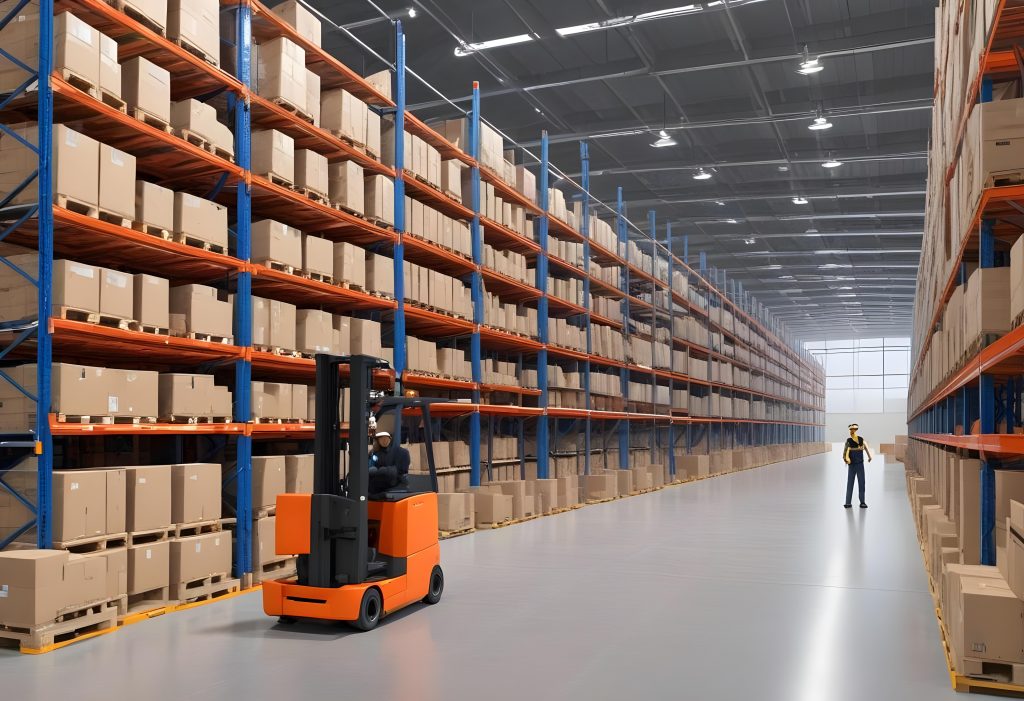In the world of warehouse management and logistics, efficient storage solutions are crucial for maximizing space utilization and streamlining operations. One of …
In today’s warehousing world, space is everything. Every square foot counts, especially in industries where inventory levels constantly shift and efficiency drives success. That’s where VNA (Very Narrow Aisle) racking comes into play.
But What is Very Narrow Aisle Pallet Racking? VNA racking is a storage solution designed to maximise storage capacity by reducing the width of aisles between racking systems. It’s an intelligent, vertical space-saving strategy that many companies are turning to for improved inventory storage and handling.
VNA systems are a specific type of industrial racking designed to prioritise maximum storage density. Traditional pallet racking usually requires wide aisles to allow standard forklifts to navigate and retrieve goods. VNA solutions, however, narrow down the aisle width to just enough for specialised equipment, which can reduce wasted space by up to 50%.
With aisles narrower than 6 feet, this system optimises every inch of storage space, allowing it to store more goods in a smaller footprint.

VNA pallet racks are carefully engineered to achieve maximum vertical and horizontal space efficiency. Here are some of its key features:
This unique setup makes solutions ideal for large storehouses needing to store high volumes of goods without expanding their physical footprint.
Compared to traditional wide-aisle racking, the systems significantly reduce aisle width, often by half or more. While standard racking allows room for general-purpose forklifts to manoeuvre, this racking is designed for specialised, slim-profile forklifts.
This setup not only enhances space usage but also increases the storage density of inventory. With the layouts, every corner of the storehouse can be efficiently used without compromising on accessibility, which is a game-changer for businesses dealing with tight space constraints.
In addition to these forklifts, some opt for automated systems, which can further improve operational efficiency and safety. Many VNA systems also use guidance features, such as rails or wires embedded in the floor, to guide forklifts within the narrow aisles and prevent accidental collisions. These small yet powerful tools are essential for manoeuvring safely and accurately through tight spaces.
Implementing a VNA racking system requires careful planning and consideration of several factors to ensure it’s the right fit for your warehouse.
When space is at a premium, these systems offer a powerful solution to increase storage capacity without expanding your physical space. However, it isn’t a one-size-fits-all solution. Considerations like budget, warehouse layout, and the type of inventory you handle all play a role in determining whether VNA racking is the best choice.
If your warehouse frequently handles high volumes of standardised products and you’re aiming to maximise storage efficiency level, then it could be the answer. But if your operations require more flexibility or frequent layout changes, it may be worth exploring other racking options.
Ultimately, VNA is an excellent option for businesses looking to make every inch of their warehouse count.
Matco Distributor offers a wide range of pallet racking systems, including selective pallet racks, drive-in, pallet flow, and pushback to maximize your warehouse storage.
What are the different types of pallet racking?
In the world of warehouse management and logistics, efficient storage solutions are crucial for maximizing space utilization and streamlining operations. One of …
Selecting an appropriate pallet racking system is one of the most crucial decisions in warehouse management, as it directly impacts operational efficiency, …
In the world of warehouse management and logistics, efficient storage solutions are crucial for maximizing space utilization and streamlining operations. Two popular …
It is good practice to utilize selective pallet racking for any warehouse activity, for it increases its efficiency and saves time whilst …
